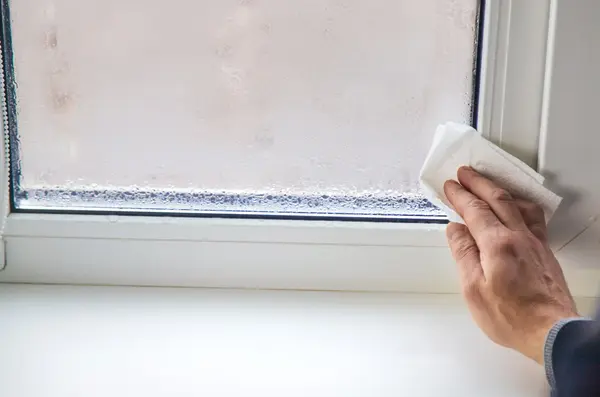Windows
Effective Ways to Remove Mold from a Windowsill

Mold growth on windowsills is a common issue in many homes, particularly during colder months. The combination of condensation from warm indoor air meeting cool windowpanes and potential leaks in window seals creates an ideal environment for mold to thrive. Fortunately, removing mold is simple with everyday household items.
What Causes Mold on Windowsills?
Mold needs three key elements to grow: mold spores, a food source (such as dust or dirt), and moisture. Since mold spores are virtually everywhere, the presence of condensation or leaks provides the moisture needed for mold to develop.
- Condensation: When warm indoor air meets cold window glass, condensation forms on the sill, creating a damp surface that encourages mold growth. This is especially common in high-humidity areas like kitchens and bathrooms.
- Leaks: A broken window seal or cracked pane can allow rain or snow to enter, creating a breeding ground for mold and mildew.
How to Remove Mold from a Windowsill
Cleaning mold from nonporous surfaces like painted windowsills is relatively easy with the right approach. Here are the most effective methods:
- Bleach: Bleach effectively kills surface mold on nonporous surfaces but may not penetrate deep enough to eliminate mold at its roots.
- Vinegar: A natural and powerful option, undiluted household vinegar kills most mold species, including black mold, and penetrates to its roots.
- Hydrogen Peroxide: A 50/50 solution of hydrogen peroxide and water is another effective mold killer, particularly for nonporous surfaces.
- Commercial Mold Cleaners: Industrial-strength solutions like RMR-86 Instant Mold Remover and 30 SECONDS Pro Mold Remover are also highly effective.
Steps to Clean Mold from a Windowsill
- Dry the area: Wipe down the windowsill with a disposable rag or paper towel.
- Apply the cleaning solution: Spray the mold with vinegar, bleach, or hydrogen peroxide and let it sit for 10 minutes.
- Scrub the mold away: Use a stiff-bristle brush to remove the mold, then wipe the area clean.
- Allow the windowsill to dry completely: Check for any remaining mold and repeat the process if necessary.
How to Prevent Mold on Windowsills
Preventing mold is just as important as removing it. To minimize mold growth:
- Improve ventilation: Use a bathroom fan when showering and consider upgrading to a more powerful fan if condensation persists.
- Use an air purifier: This helps reduce mold spores in the air.
- Fix leaks: Repair broken window seals or replace damaged windows to prevent water infiltration.
- Apply mold-resistant paint: Coating windowsills with mold-resistant paint, such as Zinsser Perma-White, can help prevent future mold growth.
When to Call a Professional
If mold covers more than 10 to 15 square feet or has penetrated porous materials, professional mold remediation is recommended. Those with asthma, mold sensitivities, or compromised immune systems should also consider professional assistance for safe mold removal.
By following these steps, homeowners can effectively remove and prevent mold growth on windowsills, maintaining a healthier indoor environment.
